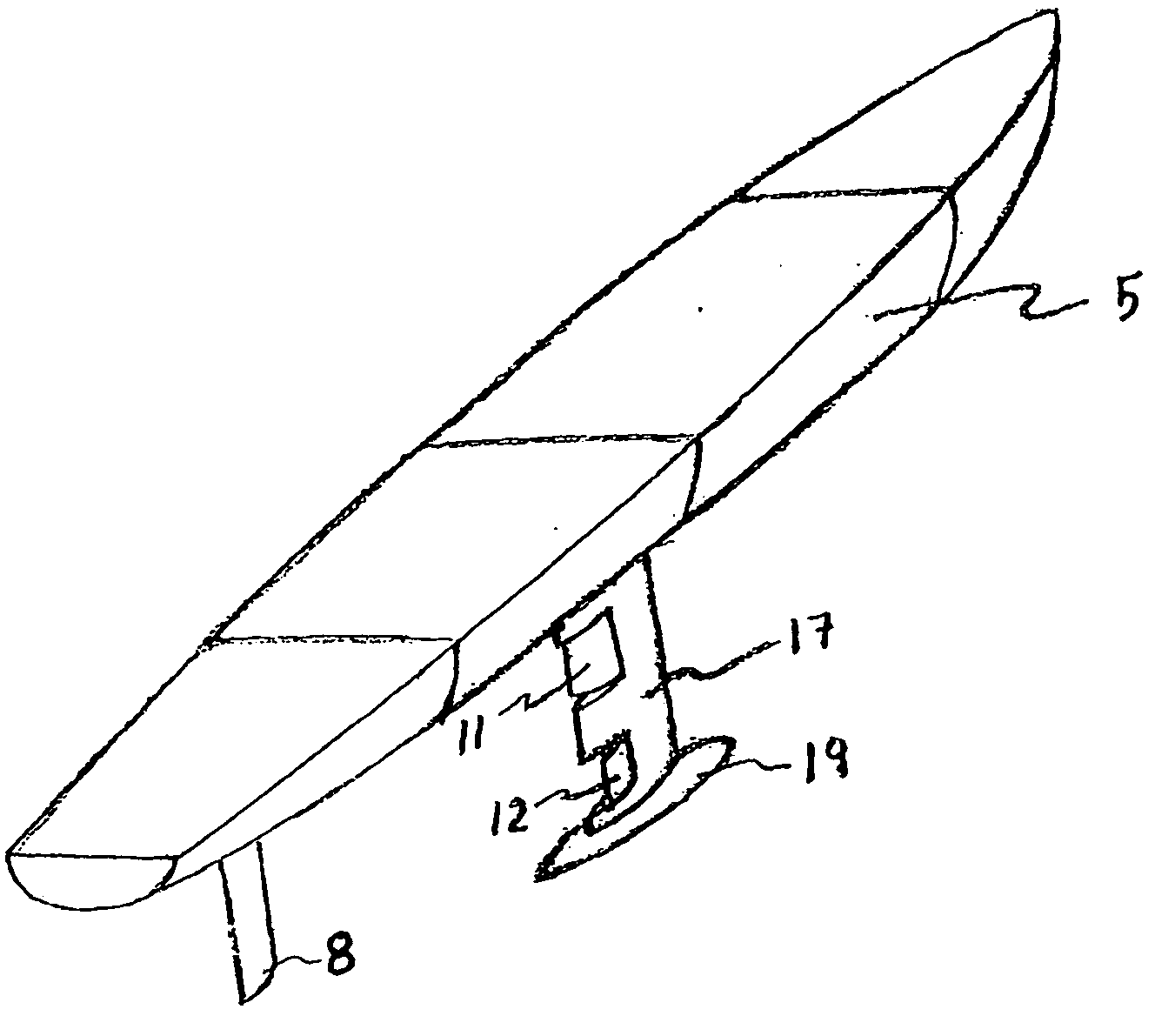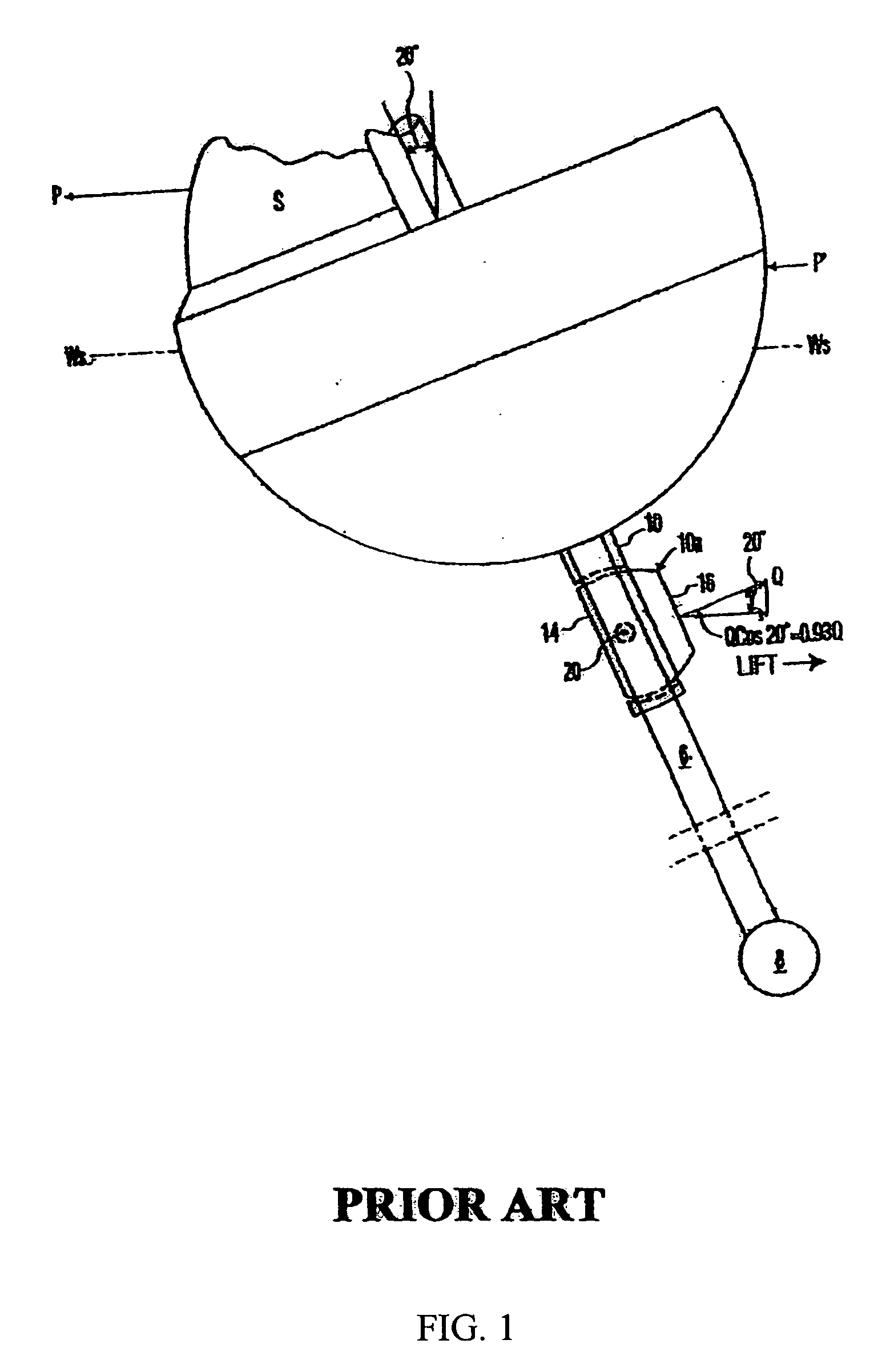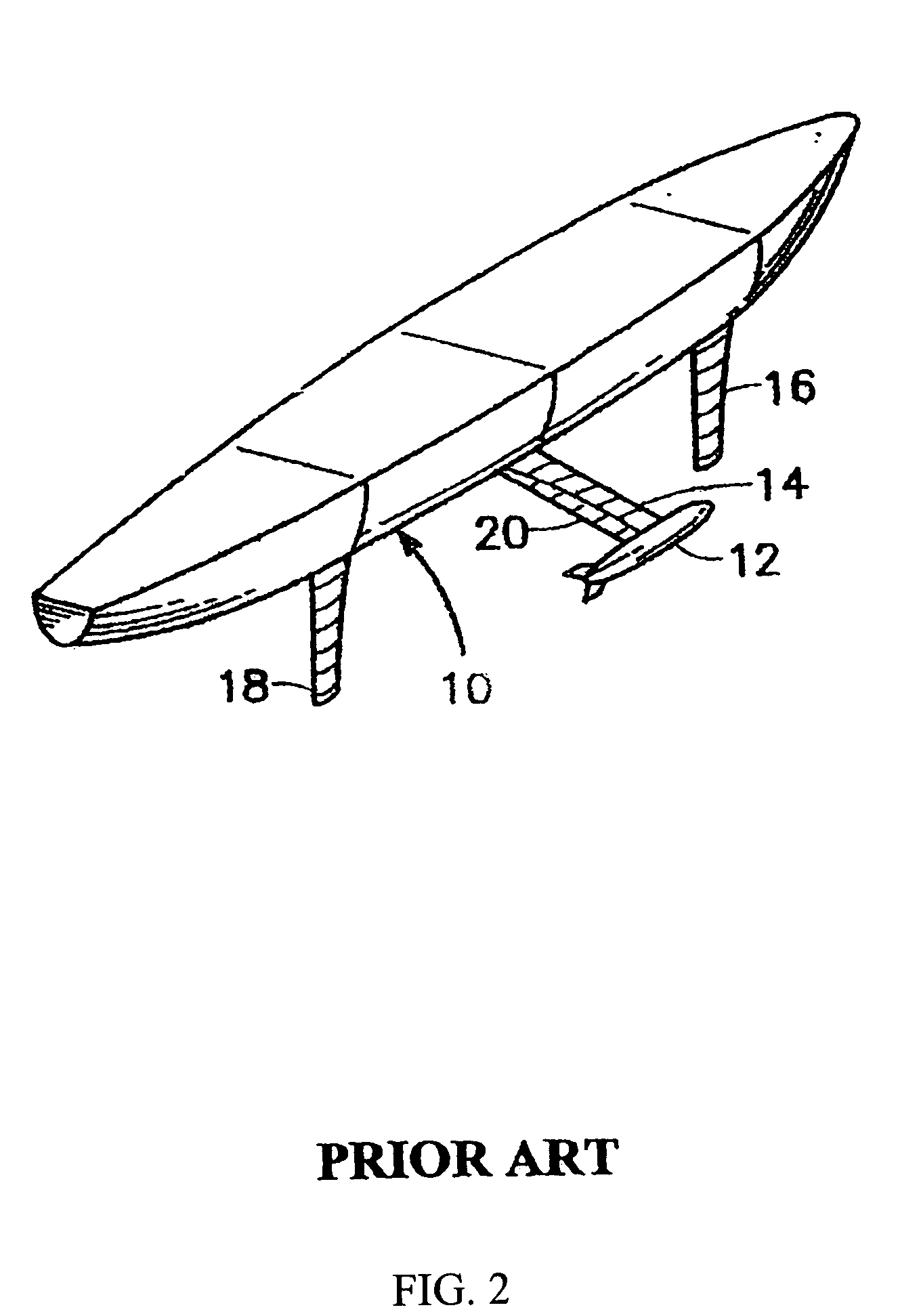Apparatus and method to optimize sailing efficiency
a technology of optimizing sailing efficiency and optimizing sailing, applied in the field of sailing vessels, can solve the problems of increasing the drag on the hull and keel, reducing the wind speed, and losing forward propelling energy, so as to maximize the efficiency of sailing vessels and optimize sailing efficiency
- Summary
- Abstract
- Description
- Claims
- Application Information
AI Technical Summary
Benefits of technology
Problems solved by technology
Method used
Image
Examples
Embodiment Construction
[0149]Turning now more particularly to the drawings, wherein like numbers refer to like elements, characteristics of the present invention are shown in FIGS. 5-18, with particular emphasis on the twin hydrofoil keel mounted combination of a counter-leeward drift hydrofoil acting in concert with a counter-heeling hydrofoil.
[0150]It is understood and defined as used herein that when a flap is hinge-mounted on the keel or similar appendage of a sailing vessel, the flap and the neighboring keel section act in conjunction with each other as a hydrofoil. When the flap is rotated, the overall camber of the hydrofoil changes, thereby changing its hydrodynamic characteristics. Therefore, the forces that are cited herein, in connection with a hinged-flap, are to be considered as the forces that act on the flap as part of the hydrofoil combination of the flap and related keel section.
[0151]The effectiveness of hydrofoils in the production of lift becomes apparent when we consider that the forc...
PUM
 Login to View More
Login to View More Abstract
Description
Claims
Application Information
 Login to View More
Login to View More - R&D
- Intellectual Property
- Life Sciences
- Materials
- Tech Scout
- Unparalleled Data Quality
- Higher Quality Content
- 60% Fewer Hallucinations
Browse by: Latest US Patents, China's latest patents, Technical Efficacy Thesaurus, Application Domain, Technology Topic, Popular Technical Reports.
© 2025 PatSnap. All rights reserved.Legal|Privacy policy|Modern Slavery Act Transparency Statement|Sitemap|About US| Contact US: help@patsnap.com



